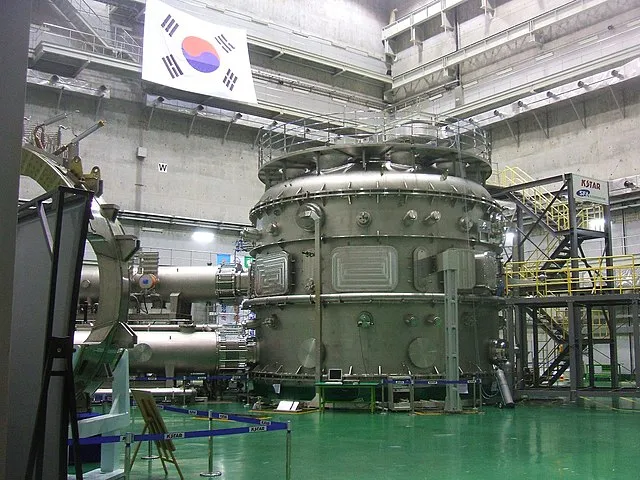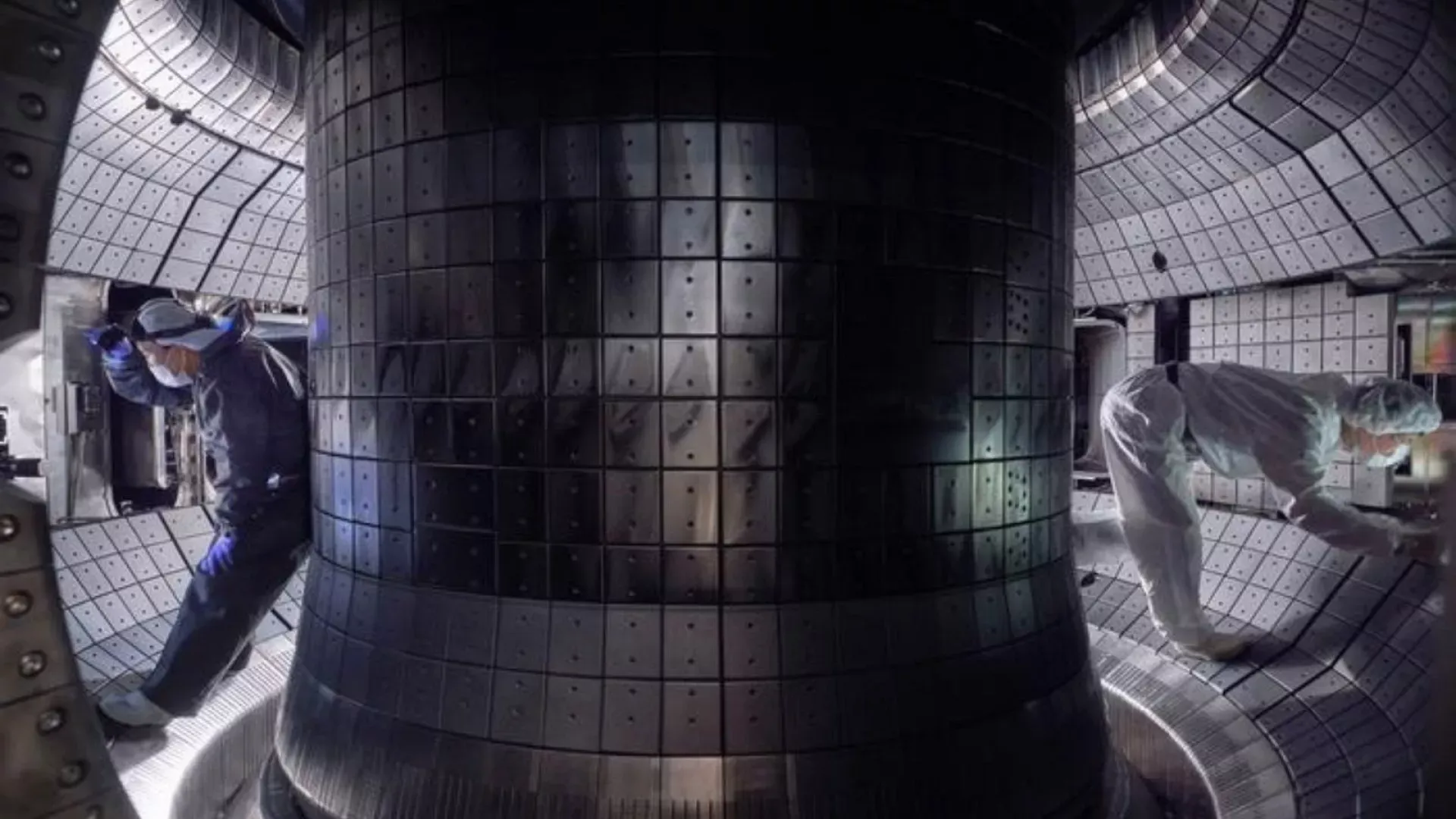KSTAR tokamak achieves 100 million degree plasma for record 48s
By Naomi Scott-Mearns and Melanie Windridge
KSTAR, or the Korea Superconducting Tokamak Advanced Research project, recently broke a world record during its plasma operations between December 2023 and February 2024 as announced by the Korea Institute of Fusion Energy (KFE).
So what has KSTAR done, and why is it significant?

KSTAR (Daejeon, Corée du Sud) © Michel Maccagnan
What have they done?
In KSTAR’s most recent plasma operations, plasma was held at 100 million degrees for 48 seconds. Also, high confinement mode of the plasma, known as H-mode, was held for more than 100 seconds. Holding for more than 100 seconds has been a long-term aim.
KSTAR first achieved 100 million degree plasma in 2018. This new world record builds on the previous world record achieved by KSTAR in 2021 when a 100 million degree plasma was achieved and held for 30 seconds.
Why is this result impressive? – Longest duration of 100 million degree fusion temperatures
48 seconds is the longest that a plasma has been held at fusion-relevant temperatures.
Sustaining high temperature and high density plasma is essential for fusion tokamak operations. In order for fusion to happen the plasma fuel must be kept dense enough (enough particles close together) and hot enough (particles with enough energy to overcome the repulsive forces between them) and long enough (enough time that some of the particles will get close enough to fuse). So the longer the plasma is held, the more fusion reactions can occur and so more energy produced.
Why is it important? - Sustaining fusion in steady-state
Future tokamak power plants would intend to operate in steady state, keeping the plasma stable and the fusion reactions going continuously. This is why extending the duration of tokamak experiments with plasmas of fusion-relevant temperature is so important.
KSTAR is a superconducting tokamak, which is why it is able to operate for longer stretches of time in comparison to, for example, the JET tokamak in the UK, which has magnets made of copper. Tokamaks with copper magnets are limited by the magnets heating up too much, but they can still do important experiments on plasma physics. JET holds the world record for fusion power produced (16 megawatts in 1997) and the total amount of fusion energy produced (69 megajoules over 5 seconds).
The Chinese tokamak EAST is also superconducting and has achieved high-performance H-mode plasma for 403s, but at lower temperature than the recent KSTAR result.
This recent record was achieved since KSTAR upgraded its divertor – a key component in a tokamak which protects the inner vessel from the intense heat of the plasma – so allowing higher temperature plasmas to be held for longer. KSTAR’s new divertor is made from tungsten – a very strong metal with a high melting point. These results prove that the divertor upgrades to KSTAR have been successful and build capability for the future under long-pulse high heating power operations.
Dr. Si-Woo Yoon, Director of the KSTAR Research Centre, said: “Despite being the first experiment run in the environment of the new tungsten divertors, thorough hardware testing and campaign preparation enabled us to achieve results surpassing those of previous KSTAR records in a short period… To achieve the ultimate goal of KSTAR operation, we plan to sequentially enhance the performance of heating and current drive devices and also secure the core technologies required for long-pulse high performance plasma operations.”
 © EuroNews
© EuroNews
What’s next? – securing the core technologies for sustained operation
KSTAR aims to build on this record and achieve 300 seconds of sustained plasma at temperatures over 100 million degrees by 2026. For this, further upgrades of components are required and the use of artificial intelligence to aid feedback control for increased plasma performance.
KSTAR is an experimental fusion device, helping to prove fusion concepts to enable commercial roll-out in the future. This recent plasma result gives scientists extra confidence that future tokamak projects around the world will be able to achieve fusion energy breakeven (getting more energy out of the fusion reactions than put in to start them) – tokamaks such as ITER, the UK’s STEP, the Chinese tokamak BEST and the SPARC tokamak being built by Commonwealth Fusion Systems. The latter two both plan to operate with deuterium-tritium fuel this decade.
The KFE President, Dr. Suk Jae Yoo said: “this research is a green light for acquiring core technologies required for the fusion DEMO reactor… we will do our best to secure core technologies essential for the operation of ITER and the construction of future DEMO reactors.”
